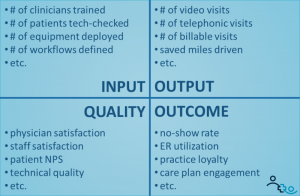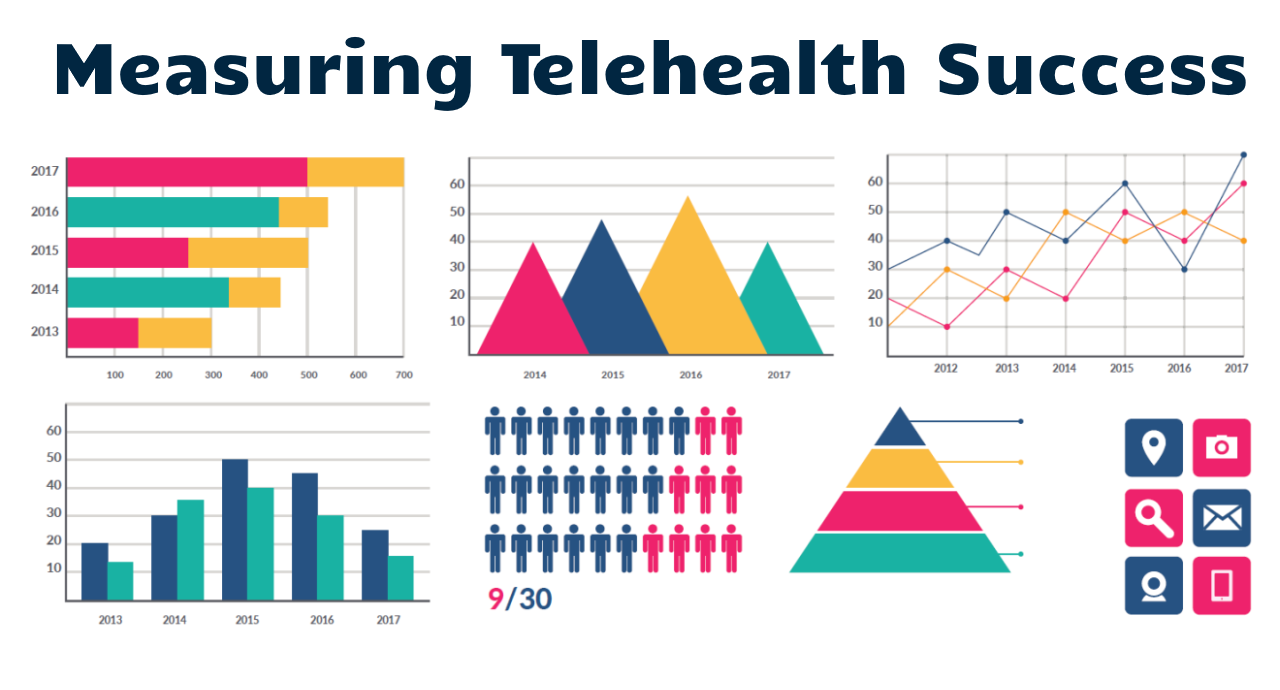How do you measure telehealth success? As one of America’s finest street philosophers quipped below, knowing where you’re going is quite important, unless you don’t mind ending up where you did not want to be.
If you don’t know where you’re going,
you’ll end up someplace else.
— Yogi Berra
Unfortunately many healthcare leaders are pretty much in the dark when it comes to the performance of their telehealth services. They oftentimes don’t know where they are (no metrics), or if they know where they are (output measures), they often can’t tell whether that is good or bad or whether they are where they are supposed to be.
As I laid out in last week’s article, the most meaningful metrics focus on quality and on outcomes. But even input or output measures can be useful, if a reasonable goal was set, against which the metric can be compared.
For example, 423 video visits in a day may be good if the goal was to raise the average number of daily visits by 5% compared to last month, where the average was 400.
A Solid Set of Telehealth Success Measures
So what is a good, solid set of measures to track the performance of your telehealth services, your telehealth success?



First, I recommend starting with the satisfaction of clinicians, staff, and patients in the “Quality” quadrant. The mood and attitude of the clinicians can create a night and day difference in the experience for the patients and can make or break your telehealth service.
I gauge satisfaction for physicians and staff by simply asking them (at least on a daily basis during their first weeks) to rate their overall experience with telehealth (on a 5-point Likert scale). For patients I focus on the Net Promoter Score, asking them how likely they are to recommend telehealth to others.
Another set of metrics that is important to track is to confirm that the technology is working. Especially in our “work-from-home, direct-to-consumer, bring-your-own-device” world, healthcare organizations do no longer have control over the end-points or connectivity. It is thus critical to ensure that the technology is working for the patients and clinicians. For patients I ask whether they could clearly hear and see the provider, whereas for clinicians I ask whether they experienced any technical problems (audio, video, etc.).
A less valuable, though still the most frequently used set are output measures which can include the number of video visits and telephonic visits, tracking billability, or saved miles driven. To make the collection and tracking of these measures valuable, they need to be measured against a target and actions must be pre-defined to deal with deviations from the target.
Input measures mostly assess the organization’s readiness for telehealth and oftentimes focus on process measures, such as training, equipment setup, etc.
The most valuable but arguably the hardest set of metrics to come by are the outcome metrics. Once telemedicine is working and adoption is rising, numerous population health outcomes can be tracked, such as fewer hospitalizations, better managed health as tracked by key health indicators (such as A1C levels for diabetics), or even significantly fewer no shows to appointments.
When to declare telehealth success
So, when and how do you declare telehealth success? As I mentioned in the previous article, metrics are most valuable when they care compared against a target, an expectation. When clearly defined and agreed-on objectives are set and subsequently met, you can declare success.
If not, then at least you can declare progress and continue to work on identifying and eliminating the root causes of underperformance.
Ultimately, it is important that the targets for each metric are set and are either aligned with the organization’s overall strategic objectives or are set in consensus with those who can impact them.
Only then will success in telehealth feel like success to all.
How is your organization measuring telehealth success? Which measures is your organization tracking? Let us know in the comments below.








To receive articles like these in your Inbox every week, you can subscribe to Christian’s Telehealth Tuesday Newsletter.
Christian Milaster and his team optimize Telehealth Services for health systems and physician practices. Christian is the Founder and President of Ingenium Digital Health Advisors where he and his expert consortium partner with healthcare leaders to enable the delivery of extraordinary care.
Contact Christian by phone or text at 657-464-3648, via email, or video chat.







Leave A Comment